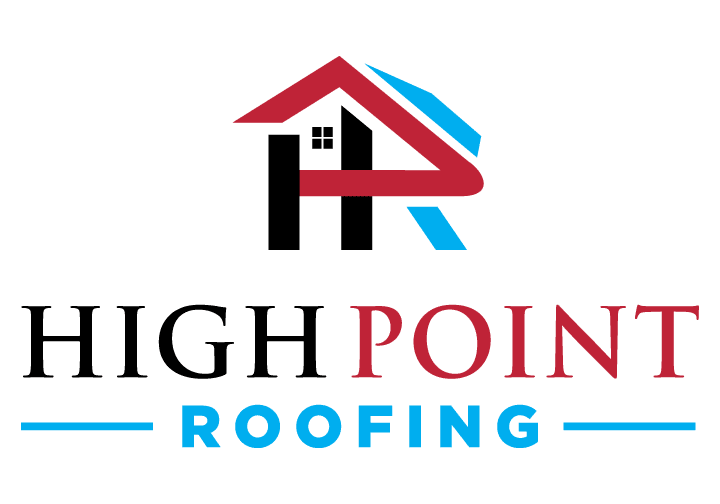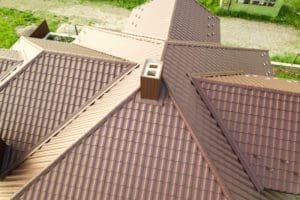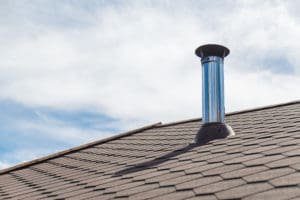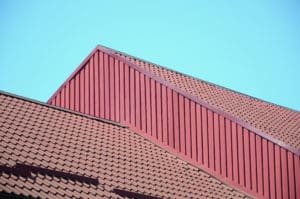Summer is just around the corner, and it’s time to start thinking about getting your roof ready for the hot weather ahead. Taking the necessary steps to prepare your roof now can help prevent potential issues and ensure that your home stays cool and comfortable throughout the summer months. In this article, we will go over the top tips for preparing your roof for summer. This includes, exploreing the importance of roof maintenance, providing you with an essential roof inspection checklist, discussing the proper techniques for cleaning your roof, and offering tips on repairing and replacing roof elements. Additionally, we will delve into the role of ventilation and insulation in maintaining a healthy roof. By following these top tips, you can ensure your roof is in optimal condition and ready to withstand the challenges of summer.
Understanding the Importance of Roof Maintenance
Regular roof maintenance is crucial to prolonging the lifespan of your roof and preventing costly repairs. One of the main factors that contribute to roof deterioration is the weather. Understanding how weather affects your roof can help you identify potential issues and address them before they become serious problems.
Roofs are not just a structural component of a building; they act as the first line of defense against the elements. From scorching heat to torrential rain, roofs bear the brunt of nature’s forces day in and day out. This continuous exposure can weaken the roof’s integrity over time, making it susceptible to various issues.
The Role of Weather in Roof Deterioration
Extreme heat, heavy rain, and strong winds can take a toll on your roof over time. The constant exposure to these elements can lead to roof leaks, shingle damage, or even roof collapse in severe cases. By understanding how weather impacts your roof, you can take proactive measures to protect it.
Moreover, snow and ice accumulation during winter can also pose significant challenges to your roof. The weight of snow can cause stress on the roof structure, leading to potential structural damage or even a collapse. Ice dams forming along the edges of the roof can result in water seepage underneath the shingles, causing water damage and mold growth.
Why Summer Preparation is Crucial
Summer brings its own set of challenges for your roof. The combination of intense sunlight, high temperatures, and increased humidity can result in the expansion and contraction of roofing materials, causing them to break down more quickly. By preparing your roof before summer arrives, you can minimize the potential damage caused by these factors.
Ensuring proper ventilation in the attic and inspecting for any signs of wear and tear on the roof surface are essential steps to take before the summer heat sets in. By addressing any issues early on, you can prevent more extensive damage that may require costly repairs down the line.
Essential Roof Inspection Checklist

Regular roof inspections are vital to catching any issues early on and preventing them from becoming major problems. Use the following checklist to conduct a thorough roof inspection:
- Start by inspecting the interior of your home for signs of water damage, such as water stains on the ceiling or walls, mold growth, or musty odors.
- Next, carefully examine the exterior of your roof. Look for loose or missing shingles, cracked tiles, damaged flashing, or any other visible signs of wear and tear.
- Inspect the gutters and downspouts for clogs or obstructions that could impede proper drainage.
- Check the condition of the chimney and ensure that it is properly sealed to prevent water leaks.
Regular roof inspections are essential for maintaining the structural integrity of your home. By identifying and addressing issues early on, you can prevent costly repairs and prolong the lifespan of your roof.
Identifying Potential Issues
During the inspection, keep an eye out for any signs of potential issues, such as soft spots on the roof, sagging or uneven areas, or excessive granules in the gutters. These could indicate underlying problems that require immediate attention.
Additionally, be on the lookout for signs of pest infestations, such as chewed or damaged roofing materials, droppings, or nests. Pest damage can compromise the integrity of your roof and should be addressed promptly to prevent further issues.
Professional vs. DIY Inspection
While it is possible to conduct a roof inspection yourself, it is recommended to hire a professional roofing contractor for a more thorough assessment. Roofing professionals have the knowledge and experience to identify hidden issues and offer appropriate solutions to ensure the integrity of your roof.
Furthermore, professional roof inspections often include a detailed report outlining the current condition of your roof, recommended repairs or maintenance, and an estimate of costs involved. This information can help you make informed decisions about the care and maintenance of your roof, ensuring its longevity and performance.
Cleaning Your Roof: A Necessary Step

Cleaning your roof is an essential part of roof maintenance. It helps remove dirt, debris, moss, and algae that can accumulate over time and compromise the lifespan of your roof.
Regular roof cleaning not only enhances the appearance of your home but also prevents potential damage that can lead to costly repairs in the future. By keeping your roof clean, you are also improving its energy efficiency, as a clean roof can reflect more sunlight and heat, reducing the workload on your cooling system during hot weather.
The Right Cleaning Techniques
When cleaning your roof, it is important to use the correct techniques to avoid causing damage. Start by removing loose debris with a broom or leaf blower. Then, use a non-abrasive cleaner specifically designed for roofs to gently wash away dirt and algae. Avoid using high-pressure washers, as they can strip away protective coatings and loosen shingles.
For stubborn stains or moss growth, consider using a mixture of water and mild detergent to scrub the affected areas gently. Always rinse the roof thoroughly after cleaning to prevent any residue from causing damage over time. Additionally, trim overhanging tree branches to prevent leaves and debris from accumulating on the roof and causing potential water damage.
Safety Measures During Roof Cleaning
Roof cleaning can be a risky task, so it’s important to take the necessary safety precautions. Always wear protective clothing, gloves, and non-slip shoes. Use a sturdy ladder and secure it properly. If you are uncomfortable or unsure about the process, consider hiring a professional roof cleaner to ensure your safety.
Furthermore, check the weather forecast before starting the cleaning process to avoid slippery conditions or strong winds that could jeopardize your safety. It’s also advisable to work with a partner who can assist you and provide help in case of an emergency. By prioritizing safety during roof cleaning, you can ensure a successful and accident-free maintenance routine for your home.
Repairing and Replacing Roof Elements

Over time, certain roof elements may deteriorate and require repairs or replacement. Knowing when to repair or replace these elements can save you time, money, and potential headaches.
Roofs are exposed to various elements such as sunlight, rain, wind, and snow, which can cause wear and tear over time. Regular inspections and maintenance can help identify issues early on and prevent costly damages in the future.
When to Repair vs. When to Replace
Minor damages such as small leaks or missing shingles can often be repaired without replacing the entire roof. However, if the damage is extensive, or your roof is nearing the end of its lifespan, it may be more cost-effective to invest in a full roof replacement.
It’s important to consider the age of your roof, the extent of the damage, and your long-term plans for the property when deciding between repairs and replacement. Consulting with a professional roofer can provide valuable insights and help you make an informed decision.
Choosing the Right Materials for Your Roof
If you decide to replace your roof, choosing the right materials is essential. Consider factors such as durability, energy efficiency, and aesthetics when selecting roofing materials. Consult with a professional roofing contractor to determine the best options for your specific needs.
Popular roofing materials include asphalt shingles, metal roofing, clay tiles, and wood shakes. Each material has its own advantages and considerations, so it’s important to weigh your priorities and budget when making a decision. Additionally, factors such as local climate, building codes, and maintenance requirements should also be taken into account when choosing roofing materials.
The Role of Ventilation and Insulation

A well-ventilated and properly insulated roof is crucial for maintaining a comfortable and energy-efficient home. Ventilation helps remove excess heat and moisture from the attic, while insulation prevents heat transfer between the indoors and outdoors.
When it comes to ventilation, it’s important to consider both intake and exhaust vents. Intake vents allow fresh air to enter the attic, while exhaust vents expel hot, moist air. This balanced airflow helps prevent issues such as mold growth, wood rot, and premature shingle deterioration. Additionally, proper insulation is key to reducing heat loss in the winter and heat gain in the summer, ultimately lowering your energy bills and increasing overall comfort.
Improving Your Roof’s Ventilation
If your attic lacks proper ventilation, it can lead to a buildup of heat and moisture. This can cause damage to your roof and increase your energy costs. Installing roof vents or ridge vents can help create a balanced airflow and improve the overall ventilation of your roof.
Consider adding a solar-powered attic fan to enhance ventilation further. These fans are powered by the sun, making them an energy-efficient option. They help remove hot air from the attic, reducing the strain on your air conditioning system and prolonging the life of your roof.
The Benefits of Proper Insulation
Proper insulation not only helps regulate temperature but also improves energy efficiency. It prevents warm air from escaping during the winter and keeps cool air inside during the summer. Ensure that your roof is adequately insulated to maximize energy savings and maintain a comfortable living environment.
Another insulation option to consider is radiant barrier insulation. This type of insulation reflects heat away from your home, reducing the amount of heat that enters your attic. By incorporating radiant barrier insulation into your roofing system, you can further enhance energy efficiency and comfort levels within your home.
By following these top tips for preparing your roof for summer, you can proactively address maintenance issues, prevent potential problems, and ensure that your roof remains in optimal condition throughout the hot season. Remember to conduct regular inspections, clean your roof using the proper techniques, and address any necessary repairs or replacements. By prioritizing roof maintenance, you will not only extend the lifespan of your roof but also protect your home and enjoy a worry-free summer.





